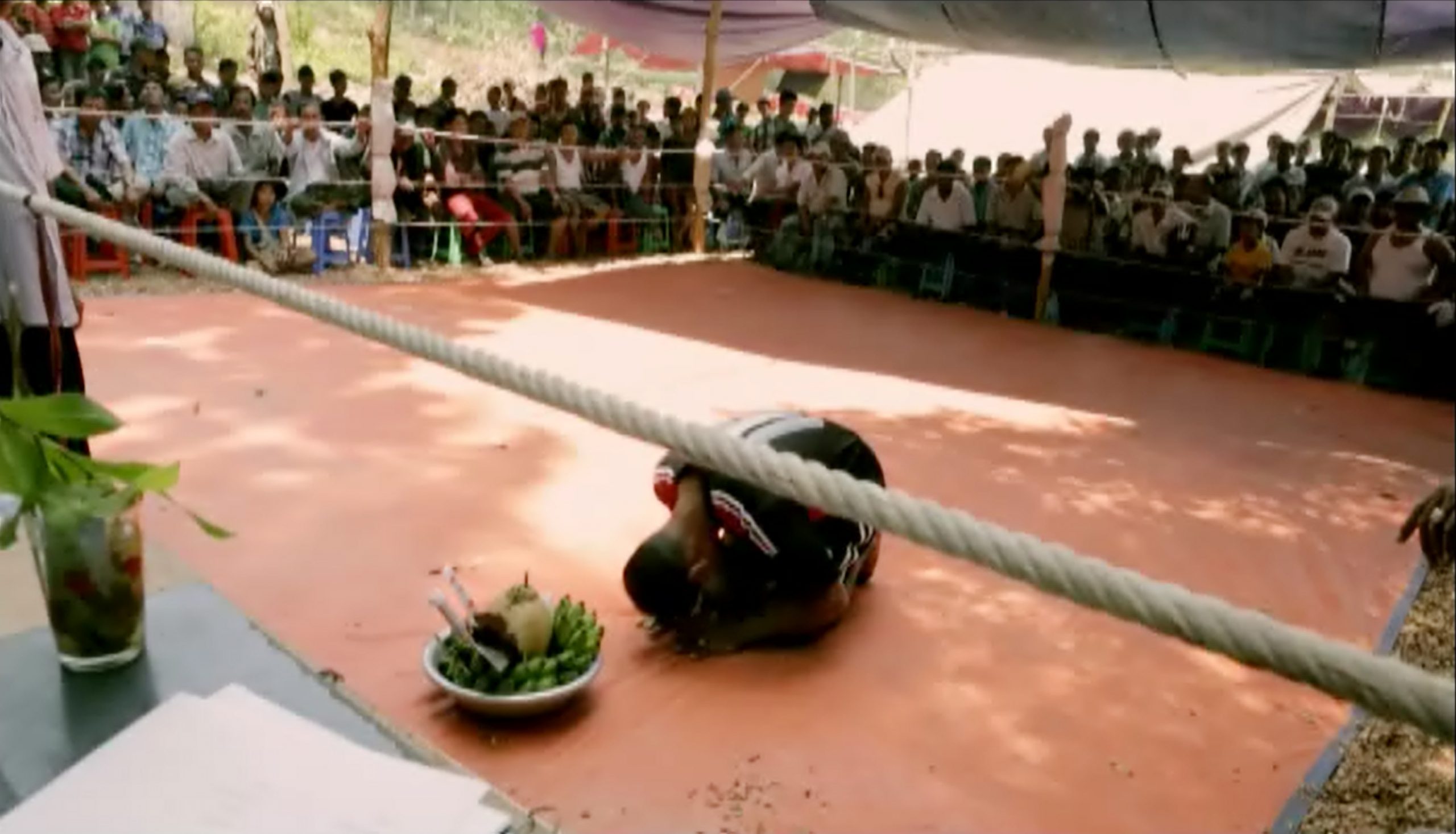LETHWEI AMERICA

Lethwei as a Culture
“Lethwei is linked to the identity of Myanmar –
it is a a combat sport, a fighting art, and a culture.”
– Sayar Win Zin Oo
The Burmese calendar year is lunar-based and includes an variety of annual festivals. The best-known of these is Thingyan is a four-day celebration that culminates on New Year’s Day and is closely followed by a series of local pagoda festivals. For hundreds of years, Lethwei tournaments have been typically held during these festivals. In addition to Thingyan, Lethwei contests are also held during funerals and local celebrations. It is common to see Buddhist monks and village crowds gathering around sand pits where the fights were traditionally held.1,2

Lethwei matches are a central component of these events. The Lethwei contests held during such holidays and celebratory events carry a spirit of cultural feel and importance that differ from the commercial Lethwei shows and spectacles held in major cities like Yangon and Mandalay.1,2
The traditional festival fights are celebratory, and crowds show up to cheer the local fighters. There is a tremendous joy, camaraderie and fighting spirit displayed throughout the festival. In the villages, these Lethwei traditions have been and continue to be an important aspect of the spiritual and physical growth of young people.1,2
A distinguishing feature of the Thingyan and pagoda fights is that they are more about the celebration than violence. More about the competitive spirit and less about winning. The refs want a spirited bout and often – especially with children – keep the bouts short and lively. The crowd and promoters often reward the more spectacular and gutsy fighters with money for their spirited performance.2
Lethwei gives us a look back into the distant past. Its long, rich history shows us a world where brave fighters fought as an act of manhood and pride. Lethwei was often used to prepare Myanmar men for the horrors of endless battlefields that were once part of Myanmar’s ancient past. For the people of Myanmar, Lethwei offers more than just fighting sport and ringside entertainment, it reconnects them to their cultural identity. It is an opportunity for them to celebrate their diverse ethnic backgrounds and community.1,3
Outside of the festivals and celebrations, most practitioners of Lethwei are farmers and laborers who participate in the sport in their leisure time. Although contestants fight bare-fist and barefoot, courtesy and concern for safety are essential elements inherent in the art.4
Above all else, the essence of Lethwei is its spirit. According to Sayar Win Zin Oo, renowned Lethwei coach and founder of the Thut Ti Gym in Yangon, Myanmar:
“…the aggression that is witnessed in a Lethwei fight is left inside the ring and is not seen outside the ring. Outside the ring is all about respect. Outside observers are often struck by the gentle, brotherly nature of the fighters after a fight. He explains, ‘the fights are really violent but, there’s not as much testosterone, arrogance or attitude as you see in MMA or boxing. They don’t want to kill their opponent, they just want to win the fight’ adding, ‘In traditional Lethwei fights there’s no trash talking.’ During a Lethwei match where one of the fighters goes down, it is not unusual to see the other fighter help his opponent up. At the same time, others run to aid the downed fighter.
Saya Win explains, ‘The heart of the fighting system is linked with sporting spirit, after the bloody fight they hug each other. Watching the fighters outside the ring, one can see the best way to practice combat sports and martial arts. Rather than raging through the streets, jacked up on testosterone and glory of the victory, world class Lethwei champions typically live simple, unassuming lives, greeting their fans with humility’.
This sporting spirit is fostered in the fighters from an early age. Win explains that a ‘noble mind’ is what makes a Lethwei champion truly great. ‘The courage to forget and forgive is very important, somebody punches you and you bleed and the next day you have to sit together. If you’re not at that standard you won’t be recognized as a genuine Lethwei fighter. I think it goes back to the politeness, the obedience, perseverance, courage – those are the components of a true Lethwei fighters”.1
Sayar Win further explains,
“If you have to pick up only one thing that makes a Lethwei warrior, I pick courage.’ He adds, ‘I refer to it as facing something that you’re afraid of and choosing to take the pain with a sense of determination. This spirit it very important to both professionals and the fighters in small villages.’ As he speaks, there is a sense that he is not only speaking about Lethwei fighters but, Myanmar’s people. The courage and fighting spirit at the heart of the sport runs deeper, to the core of a nation that has had to pick itself up again and again”.1
Please view the video, “Unity in Diversity” featuring Sayar Win Zin Oo.,
References
1 The Bodedit. (2017). Lethwei – The Art of Nine Limbs. https://thebodedit.com/sport/lethwei-fighting-the-art-of-nine-limbs/
2 Simandan, V. M. (2015). Burmese Lethwei: An Ancient Tradition Lives On. https://www.simandan.com/burmese-lethwei-an-ancient-tradition-lives-on/
3 Giordano, V. (2012). Burmese Lethwei: The Ancient Art of Bare-Knuckle Fighting. Muay Thaimes. Vol. 6; No. 1.
4 Thant, M. & Nyein, B. (Nov. 1974). If He Bleeds, Stop Hitting Him. Black Belt Magazine